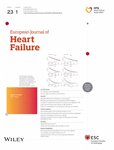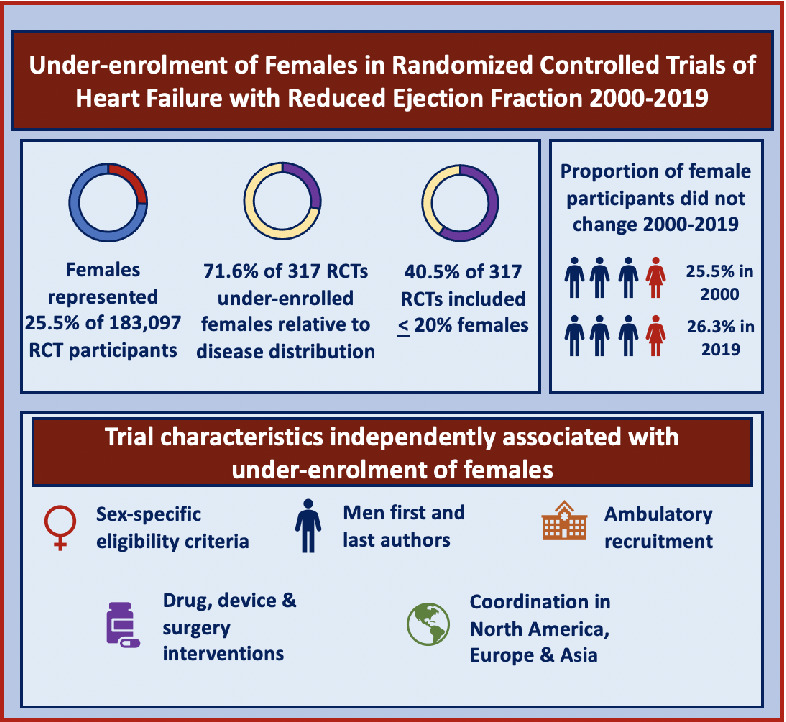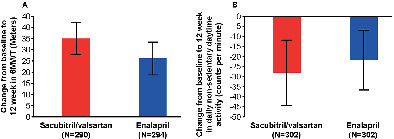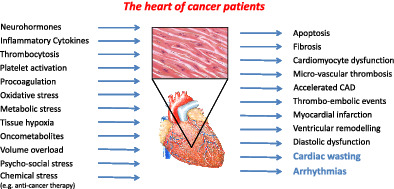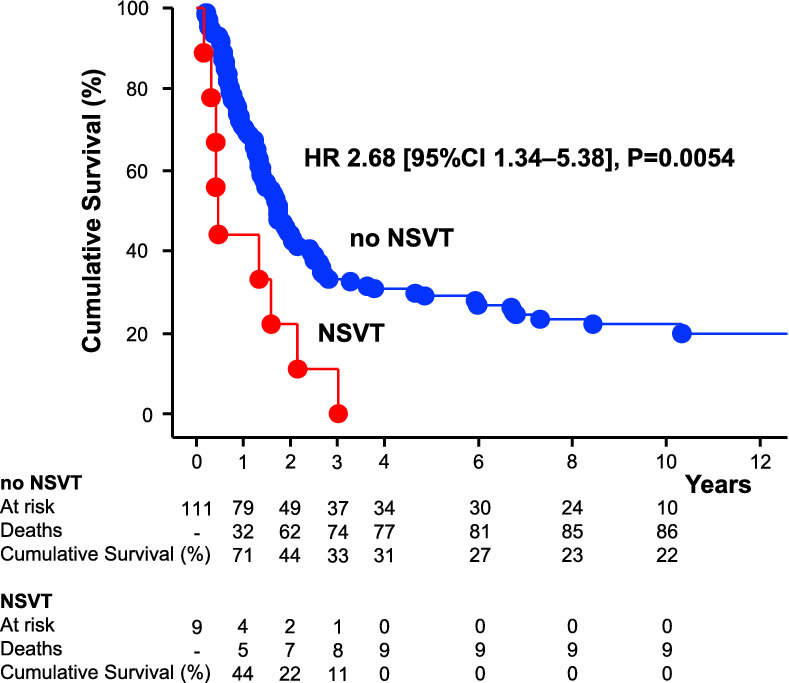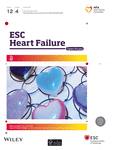Journal list menu
Export Citations
Download PDFs
ISSUE INFORMATION
INTRODUCTION
January 2021 at a glance: focus on sex differences, acute heart failure and exercise capacity
- Pages: 1-2
- First Published: 16 March 2021
SEX DIFFERENCES
Research article
National trends in heart failure mortality in men and women, United Kingdom, 2000–2017
- Pages: 3-12
- First Published: 06 September 2020
Editorial comment
Sex differences and heart failure – a story of two tales
- Pages: 13-14
- First Published: 30 October 2020
Systematic review
Trial characteristics associated with under-enrolment of females in randomized controlled trials of heart failure with reduced ejection fraction: a systematic review
- Pages: 15-24
- First Published: 29 October 2020
Editorial comment
Improving female enrolment in randomized clinical trials of heart failure with reduced ejection fraction to ensure evidence-based health care recommendations
- Pages: 25-26
- First Published: 19 December 2020
ACUTE HEART FAILURE
Viewpoint
SOLOIST-WHF and updated meta-analysis: sodium–glucose co-transporter 2 inhibitors should be initiated in patients hospitalized with worsening heart failure
- Pages: 27-30
- First Published: 06 December 2020
Research article
Frequency, trends and institutional variation in 30-day all-cause mortality and unplanned readmissions following hospitalisation for heart failure in Australia and New Zealand
- Pages: 31-40
- First Published: 23 October 2020
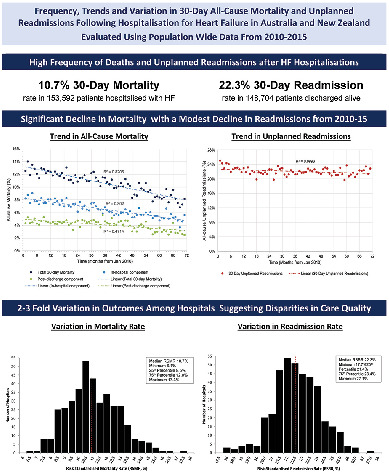
In this population-wide study of early outcomes following heart failure (HF) hospitalisations in Australia and New Zealand, we found that one in 10 patients died, and almost a quarter experienced an unplanned readmission, within 30 days. We also observed a significant decline in 30-day all-cause mortality and a modest reduction in readmissions over the study period despite the absence of broad policy efforts to improve HF outcomes. However, 30-day mortality and unplanned readmission rates varied two to threefold among hospitals suggesting disparities in care quality, highlighting the need for coordinated efforts to standardise care.
Editorial comment
Patterns of unplanned readmissions after heart failure hospitalization: novel longitudinal perspectives from Australia and New Zealand
- Pages: 41-42
- First Published: 28 November 2020
Research articles
Is acute heart failure a distinctive disorder? An analysis from BIOSTAT-CHF
- Pages: 43-57
- First Published: 19 December 2020
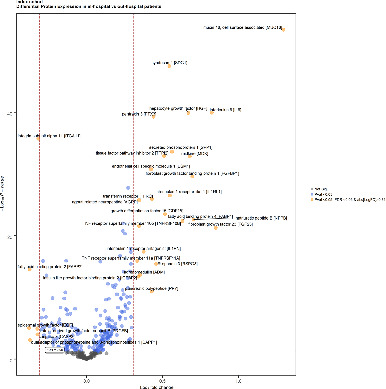
Differential protein expression in inpatients relative to outpatients. Presented is a volcano plot of differential protein expression showing the fold change (FC), i.e. the ratio of average expression in inpatients to average expression in outpatients, vs. the corresponding t-test P-value per protein and on logarithmic scales. Higher values on the y-axis indicate stronger statistical significance, values >0 on the x-axis indicate up-regulation in inpatients, and values <0 on the x-axis indicate down-regulation in inpatients. Significantly differentially expressed proteins have been labeled. FDR, false discovery rate.
Association of left ventricular ejection fraction with worsening renal function in patients with acute heart failure: insights from the RELAX-AHF-2 study
- Pages: 58-67
- First Published: 22 September 2020
Effects of empagliflozin on renal sodium and glucose handling in patients with acute heart failure
- Pages: 68-78
- First Published: 29 November 2020
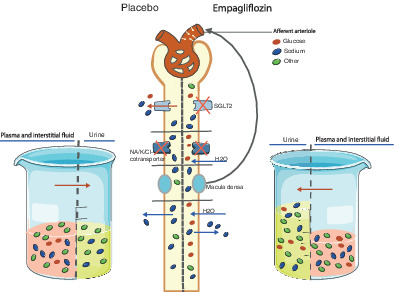
Graphical representation of changes in urinary and plasma volume and osmolality. As more glucose is excreted as a result of sodium-glucose co-transporter 2 (SGLT2) inhibition, more water is drawn to the urine keeping osmolality constant. As a result of increased electrolyte free water excretion, plasma osmolality is moderately increased and total volume of plasma and interstitial fluid is decreased.
Editorial comment
Empagliflozin and renal sodium handling: an intriguing smart osmotic diuretic
- Pages: 79-82
- First Published: 28 December 2020
EXERCISE CAPACITY
Position paper
Measuring physical activity with activity monitors in patients with heart failure: from literature to practice. A position paper from the Committee on Exercise Physiology and Training of the Heart Failure Association of the European Society of Cardiology
- Pages: 83-91
- First Published: 27 October 2020
Review
Improving exercise capacity and quality of life using non-invasive heart failure treatments: evidence from clinical trials
- Pages: 92-113
- First Published: 11 May 2020
Research article
Effects of exergaming on exercise capacity in patients with heart failure: results of an international multicentre randomized controlled trial
- Pages: 114-124
- First Published: 13 March 2020
Editorial comment
Exergaming for heart failure: an idea so good it just ought to work
- Pages: 125-126
- First Published: 11 May 2020
Research article
OUTSTEP-HF: randomised controlled trial comparing short-term effects of sacubitril/valsartan versus enalapril on daily physical activity in patients with chronic heart failure with reduced ejection fraction
- Pages: 127-135
- First Published: 13 December 2020
Editorial comment
OUTSTEP-HF: re-evaluating the role of physical activity measures in drug and device development in heart failure
- Pages: 136-139
- First Published: 22 January 2021
ONCOLOGY
Review
Advanced cancer is also a heart failure syndrome: a hypothesis
- Pages: 140-144
- First Published: 28 November 2020
Research article
Ventricular tachycardia, premature ventricular contractions, and mortality in unselected patients with lung, colon, or pancreatic cancer: a prospective study
- Pages: 145-153
- First Published: 22 November 2020
Editorial comment
Arrhythmias in cancer: rhythm is gonna get you!
- Pages: 154-156
- First Published: 19 December 2020
DISEASE MANAGEMENT
Position paper
Self-care of heart failure patients: practical management recommendations from the Heart Failure Association of the European Society of Cardiology
- Pages: 157-174
- First Published: 18 September 2020
Review
A current and future outlook on upcoming technologies in remote monitoring of patients with heart failure
- Pages: 175-185
- First Published: 27 October 2020
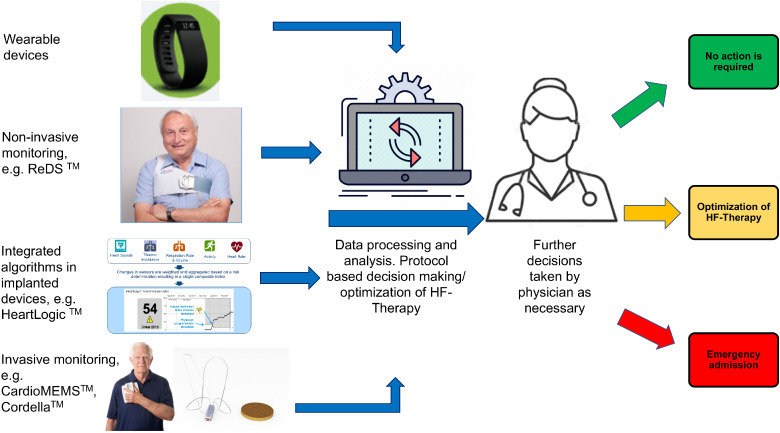
Different remote monitoring options (wearables, non-invasive devices like ReDS™, integrated algorithms in implanted cardiac devices like HeartLogic™). The resulting data will be transferred to medical centres and will be reviewed frequently from medical personnel (physicians, trained nurses, etc.). Accordingly, decisions should be made to modify the medical therapy or to organize an emergent admission of the patients. Alternatively, no action could be required assuring a stable condition of heart failure (HF) patients.
Research article
Telemonitoring in patients with chronic heart failure and moderate depressed symptoms: results of the Telemedical Interventional Monitoring in Heart Failure (TIM-HF) study
- Pages: 186-194
- First Published: 15 October 2020
RESEARCH LETTER
First-in-man case of non-invasive proton radiotherapy for the treatment of refractory ventricular tachycardia in advanced heart failure
- Pages: 195-196
- First Published: 12 November 2020
LETTERS TO THE EDITOR
Does end-organ dysfunction precede or follow cardiogenic shock in acute decompensated heart failure? The two-faced Janus. Letter regarding the article ‘Epidemiology, pathophysiology and contemporary management of cardiogenic shock — a position statement from the Heart Failure Association (HFA) of the European Society of Cardiology (ESC)’
- Page: 197
- First Published: 22 June 2020
Does end-organ dysfunction precede or follow cardiogenic shock in acute decompensated heart failure? The two-faced Janus. Reply
- Pages: 197-198
- First Published: 15 July 2020
Spironolactone discontinuation in patients with heart failure: complex interactions with loop diuretics. Letter regarding the article ‘Spironolactone dose in heart failure with preserved ejection fraction: findings from TOPCAT’
- Pages: 198-199
- First Published: 23 October 2020




